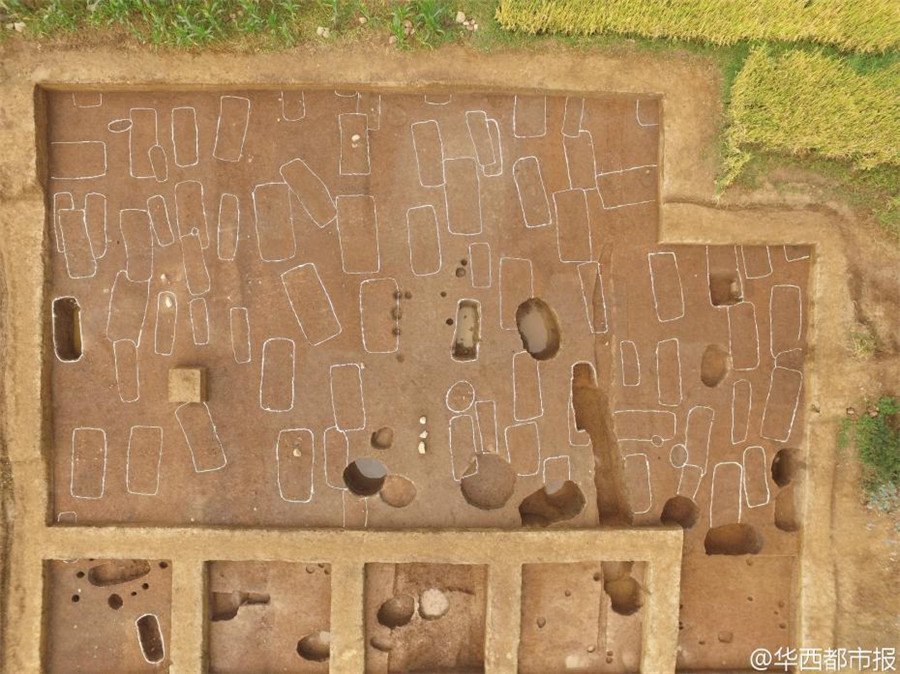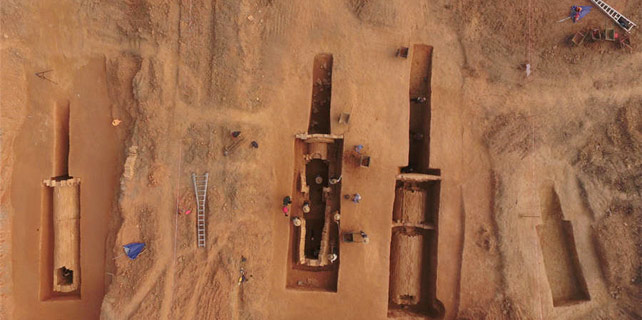China's major archaeological discoveries in 2016
 |
|
Human settlement sites from the pre-Qin period are discovered along the Anning river valley plain in Southwest China's Sichuan province. [File photo/Western China Metropolis Daily Micro-Blog] |
Pre-Qin period settlement sites discovered in SW China's Sichuan
Archaeologists have discovered more than 3,500 ancient post holes on the Anning River Plain in Sichuan province. The holes were made to hold posts for the construction of shelters more than 1,800 years before the establishment of the Qin Dynasty (221-206 BC), China's first feudal dynasty.
Nearly 50 square pits dating back to the pre-Qin period were found, with the length of their sides ranging from 2.8 to 3.5 meters, and depths ranging from 0.15 to 0.6 meters. These could be the remains of semi-crypt types of residences.
Graveyards covering more than 2,000 square meters also were discovered in the excavation. Most of the tombs were made of vertical pits, urns and stones.
Archaeologists hailed the findings on the Anning River Plain in Liangshan and neighboring Panzhihua as the second-largest number of pre-Qin human settlements ever found in Sichuan, behind only those on the Chengdu Plain.













